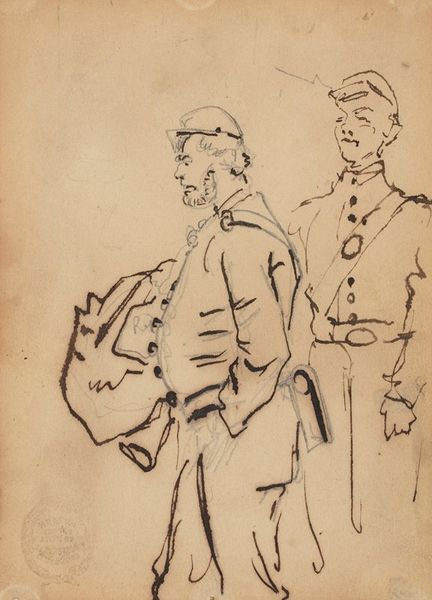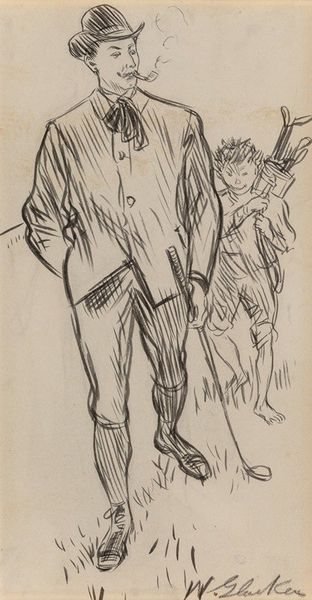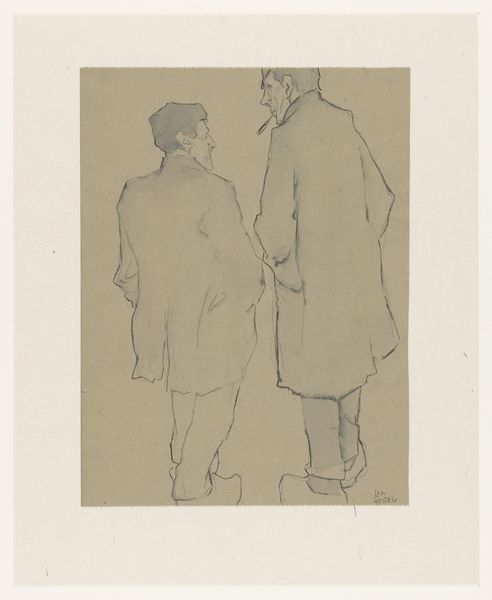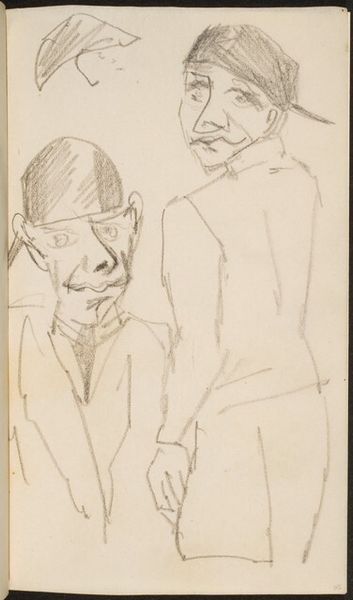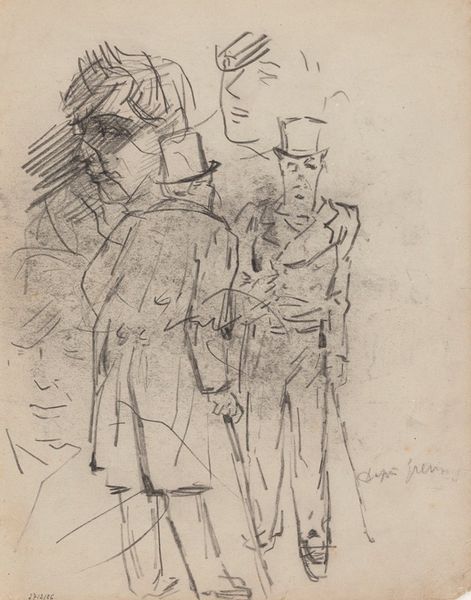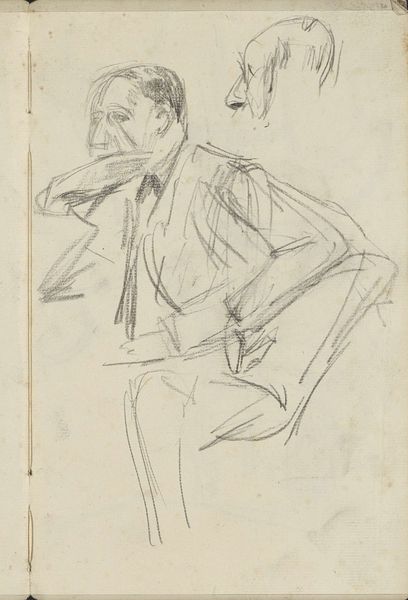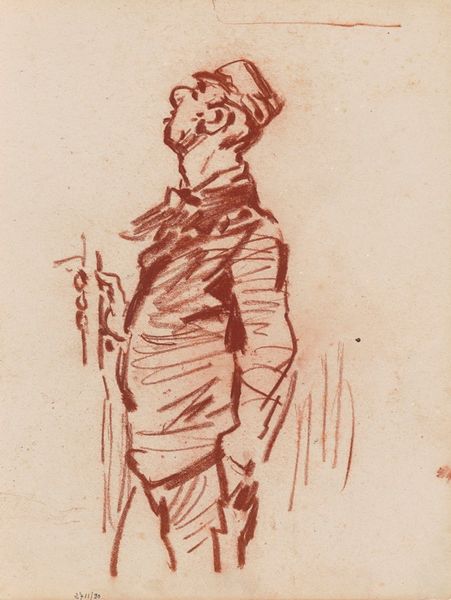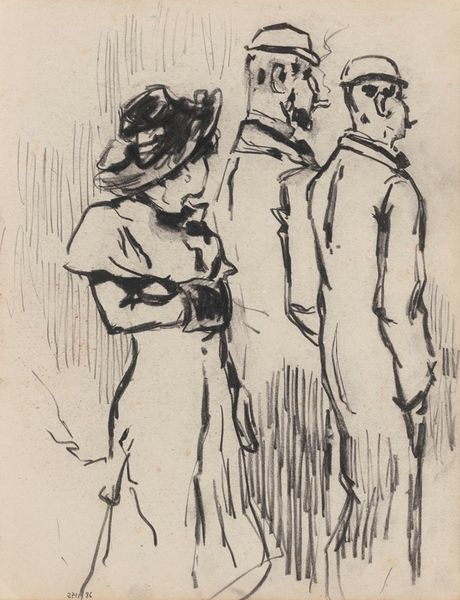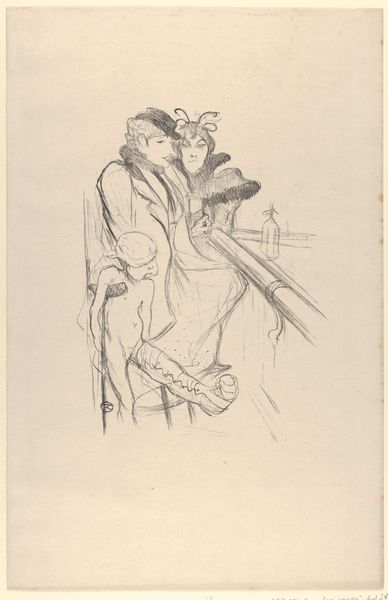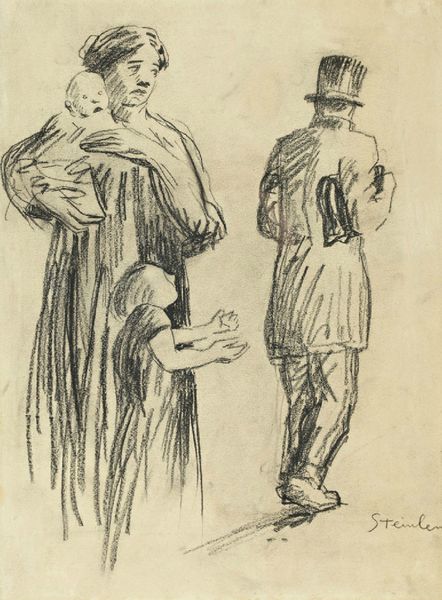
drawing
#
portrait
#
drawing
#
imaginative character sketch
#
light pencil work
#
personal sketchbook
#
idea generation sketch
#
sketchwork
#
character sketch
#
expressionism
#
sketchbook drawing
#
portrait drawing
#
storyboard and sketchbook work
#
sketchbook art
Copyright: Public Domain: Artvee
Curator: This rather striking sketch by James Ensor is titled "Gentleman and Waiter." It’s pure Ensor—economic lines, revealing volumes of complex humanity, isn’t it? Editor: Absolutely. My initial read is tension; there’s a hierarchy captured so sharply. It is a light pencil drawing, yes, but somehow it is deeply judgmental and almost… uncomfortable. Curator: Ah, but that's Ensor for you! Always digging beneath the shiny surface. Think of the labor dynamics here. We’re talking about Brussels in his time; a city humming with social stratification. Ensor uses the stark medium of ink and quick strokes to highlight the artificial nature of societal roles, maybe even the absurdity of it all. The gentleman looks a bit too smug, no? And the waiter… well, there's a story etched in that posture. Editor: I do see the tension and think about who would be sketching this out—probably a wealthy consumer of such service who takes advantage of class relations and can therefore, literally, objectify this interaction as an artistic sketch. To imagine someone turning actual people, through representation, into art feels wrong—they probably would never see the art and be able to access such an artistic culture. This sketch embodies a world of exploitation! Curator: Fair point—it has those kinds of roots. It’s just an evocative and early piece from his sketchbook and is the work of someone just formulating their visual and ideological language. Perhaps "Gentleman and Waiter" wasn't meant for display, but rather to work something out through an interaction that most would see as trivial. Editor: Still, what materials does Ensor use and who can access and benefit from these skills? And if not intended for display, how do these hidden pieces influence the later body of artwork that did circulate? Curator: Those questions are important… I'm just struck, as always, by his eye for the undercurrents of human behavior, regardless of his social standing when drawing it. And it’s all there in just a few lines. Remarkable, really. Editor: Yes, something we should certainly think about. I just think there is more behind the immediate scene than immediately meets the eye—but thank you, as always, for walking through this complicated moment with me.
Comments
No comments
Be the first to comment and join the conversation on the ultimate creative platform.

